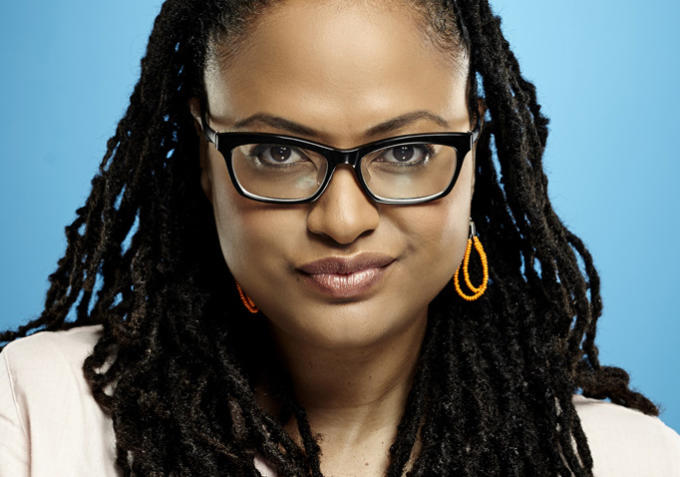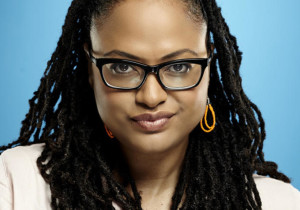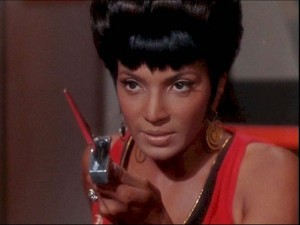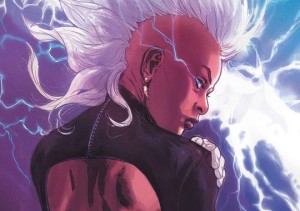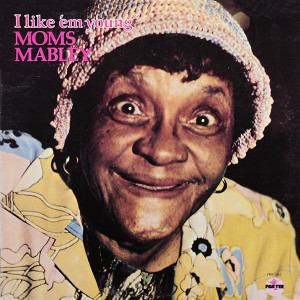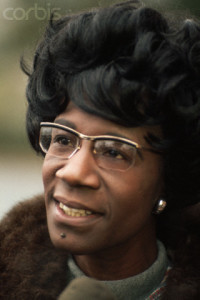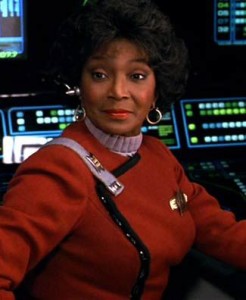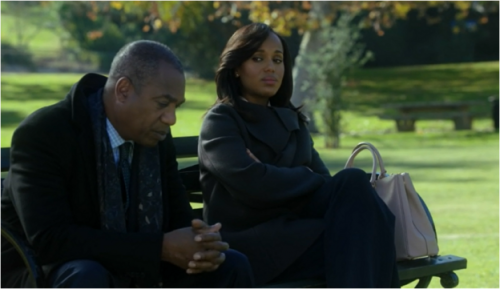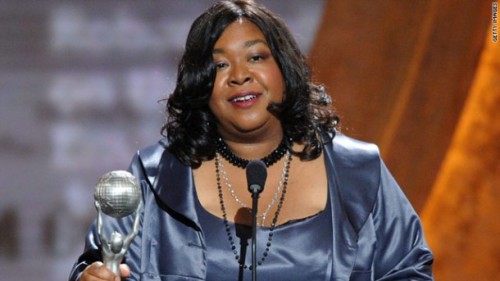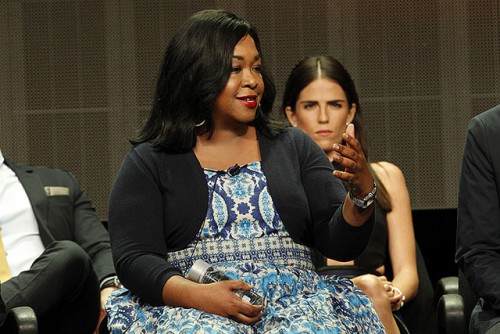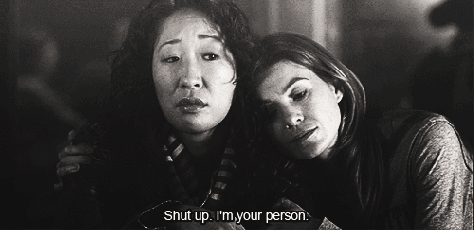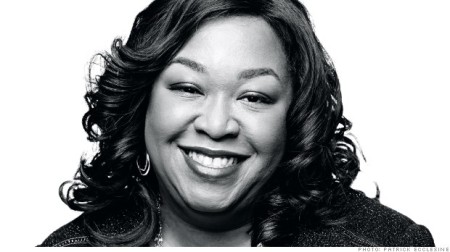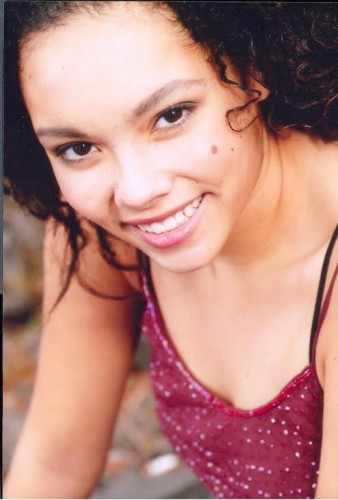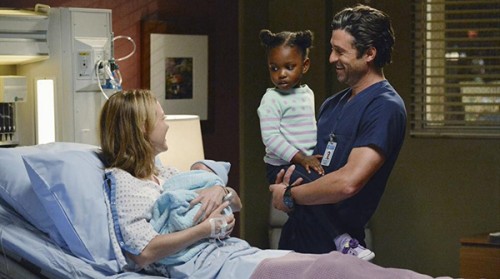This guest post by Jessica Carbone appears as part of our theme week on Unlikable Women.
“Beauty is in the eye of the beholder.” This expression is meant to remind those who hear it not to conflate a beautiful face with a beautiful soul. However, when it comes to starring roles for women on television, the most important tool an actress can bring to the table is traditional, indisputable beauty. Why is this so valuable? Because from a storyteller’s perspective, it’s the perfect narrative loophole—if your main character is physically gorgeous, no matter what horrendous moral or criminal violations she might commit, viewers are still going to be hungry to see her on screen. Some newer anti-heroines deliberately break this mold (see Hannah Horvath on Girls), and we should be happy about that—whether she’s the hero or the villain, a female character can be much more than eye candy. But a beautiful actress unlocks some very interesting plotlines in the modern television writer’s rooms, and with the rise of the antiheroine, a woman on television can now get away with murder—literally and figuratively. But to do that, she can’t just be smart, funny, and fierce—she’s also got to be HOT.

A pretty girl on television has never been an oddity—but it used to be easier to know that the attractive lead character was virtuous, just as the mustache-twirling side character was the villain. But with the first appearance of Tony Soprano, a violent gangster we could root for, writers began to craft all main characters as internally conflicted and morally compromised, crime-fighter and criminal, mama bear and femme fatale. (See Dexter, Hannibal , and Mad Men for more of this archetype). Audiences are willing to tolerate a lot from male antiheroes, partially because of historical precedent—as men have traditionally been in power, we expect our leading men to wield their power both for good and evil. But a good woman who goes bad? That prototype is sexy and revolutionary as hell—and we see that reflected in the constant shaping of the beautiful villainess, a woman who gets by being bad because she looks so good doing it. To be a woman aware of and in control of her sexuality is to be newly powerful, potentially dangerous, and thus, perfect material for the perfect anti-heroine.
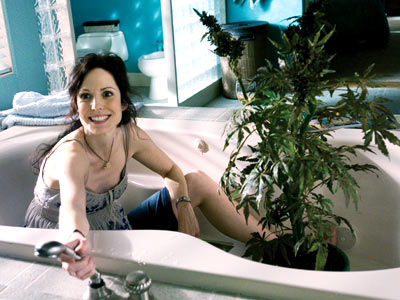
The introduction of Weeds, a half-hour comedy about a pot-dealing widow, shone a whole new light on the suburban femme fatale, especially one who comes into her own by way of her criminality and who, newly single and newly living a life of crime, gets to be a fully sexualized force of nature. Nancy Botwin (played by the radiant and ballsy Mary-Louise Parker) would do anything to keep her upper-middle class lifestyle in check—be it selling dime bags to teenagers, collaborating with a Mexican drug cartel, or romantically tie herself to any number of criminals (a fraudulent DEA agent, the murderous mayor of Tijuana, a sleazy insurance magnate). Through everything, Nancy kept her family safe with her sexuality—even in the first season, Nancy has sex with a competing dealer to defend her territory. In many ways Nancy acts as though she’s invincible—something she believes because society confirms her ability to pass unnoticed through the criminal underground. When you’re an attractive prosperous white woman in a world dominated by impoverished non-white men, it’s easy to escape because you don’t look like a criminal. And yet Nancy’s good at her job because she’s selling herself as part of the product. Hell, Snoop Dogg even names her product “MILF weed,” because its delightful effects are exactly like Nancy. What makes Nancy an admirable yet deeply troubling anti-heroine is that she doesn’t mind being objectified in order to get what she wants—sometimes she even embraces it, because it’s an effective method of negotiation. In Season 3, she literally shakes her moneymaker to get a brick of product from another dealer.
[youtube_sc url=”https://www.youtube.com/watch?v=qtlElBLg354″]
Nancy does the brick dance
What starts as a dance of awkward desperation very quickly becomes something fun for her—another moment for Nancy to hold all the cards, and get what she wants.

While Nancy discovers her powers of seduction on Weeds, many of our best antiheroines stride into view fully aware of their desirability. Fiona Goode, of American Horror Story: Coven, is a new version of the Wicked Queen prototype, updated and empowered for a 21st century kind of sexuality and MILF-status. As portrayed by the eternally flawless Jessica Lange, Fiona is the reigning Supreme (head witch) of the Salem coven, a inherited title passed down to a witch who shows mastery of her craft (which includes the power of concilium, mind-control, often demonstrated as flirtation and coercion) as well as blossoming health and beauty. Power and beauty are inextricably linked in Coven, and so Fiona is obsessed with her looks, to the point where she tries to sell her soul to a voodoo spirit to guarantee “life everlasting—no aging, no decrepitude, forever.” Fiona knows exactly how powerful beauty is, because she’s wielded it from a very young age—at age 17, she killed the reigning Supreme so she could claim the title, and given that the lone witness was in love with her, she had someone to cover up the crime (and future crimes as well). Fiona’s desire to eliminate all competition is strengthened by her love affair with the Axe Man, a murderous ghost who can be summoned to do Fiona’s bidding. (All the men on Coven are sidekicks or love interests, never once dominating the storyline, and that’s radical all by itself.) Whether Fiona is actually in love with the Axeman is unclear, but one thing is for certain—Fiona’s best weapon throughout her life has been her beauty and desirability. Whether or not the writers of Coven stand behind Fiona’s deeds, there is no question that she holds the screen, as well as all the other girls in the coven, in her thrall—when you hand a role like this to Lange, it comes a performance that’s part camp, part feminist tour-de-force, and you can’t help but admire it, even when she slaughters everyone in her wake.

It’s one thing to wield beauty deliberately, to bend the universe to your will the way Nancy and Fiona can. But can a beautiful anti-heroine ever accidentally wield this power? Even with intelligence, ingenuity, and fearlessness to wield, does beauty become the most defining characteristic of an anti-heroine?
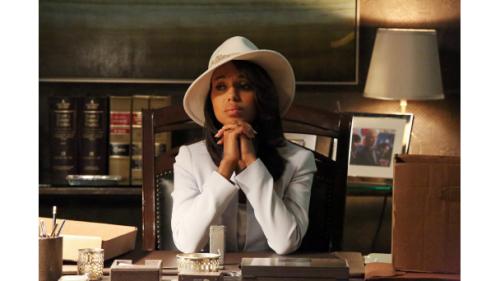
The last thing a real anti-heroine wants to be is a “damsel in distress,” and yet Olivia Pope, Scandal ’s most morally messed-up “gladiator,” is constantly finding herself in scenarios where being an object of lust is the only thing that will actually rescue her. Olivia Pope (played by the fiercely intelligent Kerry Washington) conceives of herself as a hero, a champion for the underdog, someone who “wears the white hat” and has an unfailingly good gut sense of right and wrong. But whatever ivory, bone-white, or champagne-colored hat she wears, Olivia is almost never championing the underdog. In fact, for the first two seasons of Scandal, the vast majority of her clients are powerful people needing a “fixer” to protect their image. And what better champion to call upon then, than a woman who is all perfect surface and no moral core? True, Olivia is constantly calling people out on their vile actions, but very often she is speaking more to the Scandal audience (or to her adoring employees) than to the actual person needing a shakedown. Yet Olivia is never punished for this hypocrisy because, as the series progresses, she is primarily valued for her beauty and the influence it wields—specifically, on the men who can’t resist her. But she never fully understands what that power means.
[youtube_sc url=”http://youtu.be/iJ3UBneiB9I”]
Fitz and Olivia
We know that Shonda Rhimes writes brilliant, passionate women of all orientations, races, ages, and life experiences. (We’ll be thanking her for Cristina Yang for years to come.) The development of the Rhimes heroine prototype makes for better and better television, and there’s no question that Olivia is part of that tradition—but she’s also a setback. Because every time she is imperiled, every time it looks like she will finally receive some comeuppance for any of the multitude of crimes she has committed, there’s a guy who loves her ready to swoop in and protect her. What the show does by making Olivia so desirable is actually reduce her exceptional qualities, and treats her more like a cardboard damsel in distress. (Unlike Fiona and Nancy, Olivia doesn’t suffer from the same delusions of untouchability, and that’s a byproduct of knowing just how hard she’s had to work as a black woman—class and race are a huge yet currently unexplored part of the Scandal storyline.) And while we’d like to say that Olivia’s love interests are merely incidental (and make for great soapy plotting), you could practically write a drinking game around what I call the “Pope” test. (Take a drink for any scene where two men talk to each other for more than a minute about someone other than Olivia. That’s one sober hour of television.) If Olivia really is claiming to choose herself, you’d think that would also mean choosing to take back the conversation about her own beauty, and what it can do. But instead of reckoning with that power, she constantly tries to throw it off, to disregard it or dismiss it as unimportant. And that doesn’t make her look strong—it makes her look naïve.
[youtube_sc url=”http://youtu.be/twNxmKU-jcI”]
Start at 0:52
So when we talk about television’s anti-heroines, which would we rather have—women behaving badly who are also, conveniently, beautiful? Or women who go full anti-heroine, knowing that they can be pretty when they need to? Making a female protagonist unaware of her own power, wherever it comes from, neuters her strength as a character. If Nancy didn’t know that she could get away with being a drug dealer, she’d never discover how much she could fight her own battles. If Fiona hadn’t known she was beautiful, she never would’ve become supreme. When will Olivia sit up and realize just how much she can take control of the men in her life, and use or discard them as she needs to? Rhimes has said repeatedly that she never intended Olivia to be a role model, that she “has always been an antihero,” and maybe that’s true. But maybe Olivia needs to realize that she might not be bad at the core, but being drawn that way sure makes being bad easier. And taking ownership of her sexuality, her allure, her ability to draw people in and make them love her isn’t a sign of weakness—it would be a sign of self-knowledge, and a new coat of armor. Just ask Amazing Amy. Or Cersei Lannister. Or Six.

Of course, it does pain me to think that we need more beautiful villainesses, more femme fatales, more female bodies on screen to ogle over and objectify. Haven’t we had enough of that? And if you’re anything like me, every reader of this site wants the same thing: to see more portrayals of women on film, televisions, and beyond that reflect their complexities, strengths and weakness alike. We want a greater range of body types, a greater representation of lifestyle choices, a broader world of occupations and skill sets and backstories and destinies. But if we’re going to ask for more valid portraits of strong women, we also have to validate more sources of power—and maybe in looking at television’s most beautiful antiheroes, we have to consider the value of beauty as a legitimate weapon, used for both good and evil. When it comes to my nightly viewing schedule, I’d rather have lots of beautiful girls acting out across the moral spectrum than simple pretty ingénues any day.
Jessica Carbone spends her days researching food history and editing cookbooks, and her nights writing film, television, and literary think pieces for The Rumpus, The Millions, and The Los Angeles Review of Books, among others. She lives in Washington, D.C.
Recommended reading:
From The Artifice, “Olivia Pope as modern antihero”
From Complex, “the women of American Horror Story: Coven rewriting male-dominated television”
From Flavorwire, “Just Because There’s No Tony Soprano doesn’t mean we can’t have female antiheroines”



